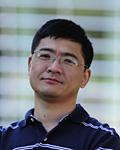Green Light on Germanium
Green Light on Germanium
-
 1. Green Light on Germanium
0
00:00/00:00
1. Green Light on Germanium
0
00:00/00:00 -
 2. OUTLINES
20.453787120453789
00:00/00:00
2. OUTLINES
20.453787120453789
00:00/00:00 -
 3. MOORE'S LAW
66.2328995662329
00:00/00:00
3. MOORE'S LAW
66.2328995662329
00:00/00:00 -
 4. FUTURE CMOS
146.27961294627963
00:00/00:00
4. FUTURE CMOS
146.27961294627963
00:00/00:00 -
 5. FUTURE CMOS
263.93059726393062
00:00/00:00
5. FUTURE CMOS
263.93059726393062
00:00/00:00 -
 6. The First Transistor is on Ge …
328.29496162829497
00:00/00:00
6. The First Transistor is on Ge …
328.29496162829497
00:00/00:00 -
 7. RECESSED S/D CONTACTS
373.60694027360694
00:00/00:00
7. RECESSED S/D CONTACTS
373.60694027360694
00:00/00:00 -
 8. RECESSED S/D CONTACTS
455.689022355689
00:00/00:00
8. RECESSED S/D CONTACTS
455.689022355689
00:00/00:00 -
 9. RECESSED S/D CONTACTS
535.50216883550218
00:00/00:00
9. RECESSED S/D CONTACTS
535.50216883550218
00:00/00:00 -
 10. Recessed S/D Contacts
580.91424758091432
00:00/00:00
10. Recessed S/D Contacts
580.91424758091432
00:00/00:00 -
 11. RECESSED S/D CONTACTS
693.5935935935936
00:00/00:00
11. RECESSED S/D CONTACTS
693.5935935935936
00:00/00:00 -
 12. RECESSED S/D CONTACTS
723.35669002335669
00:00/00:00
12. RECESSED S/D CONTACTS
723.35669002335669
00:00/00:00 -
 13. RECESSED S/D CONTACTS
769.40273606940275
00:00/00:00
13. RECESSED S/D CONTACTS
769.40273606940275
00:00/00:00 -
 14. RECESSED S/D CONTACTS
809.50950950950948
00:00/00:00
14. RECESSED S/D CONTACTS
809.50950950950948
00:00/00:00 -
 15. MOSFET BEHAVIOR
839.20587253920587
00:00/00:00
15. MOSFET BEHAVIOR
839.20587253920587
00:00/00:00 -
 16. MOSFET BEHAVIOR
925.79245912579245
00:00/00:00
16. MOSFET BEHAVIOR
925.79245912579245
00:00/00:00 -
 17. MOSFET BEHAVIOR
961.99532866199536
00:00/00:00
17. MOSFET BEHAVIOR
961.99532866199536
00:00/00:00 -
 18. MOSFET BEHAVIOR
1026.8935602268937
00:00/00:00
18. MOSFET BEHAVIOR
1026.8935602268937
00:00/00:00 -
 19. MOSFET BEHAVIOR
1074.8415081748415
00:00/00:00
19. MOSFET BEHAVIOR
1074.8415081748415
00:00/00:00 -
 20. GE CMOS CIRCUITS
1122.4224224224224
00:00/00:00
20. GE CMOS CIRCUITS
1122.4224224224224
00:00/00:00 -
 21. GE CMOS CIRCUITS
1174.6746746746746
00:00/00:00
21. GE CMOS CIRCUITS
1174.6746746746746
00:00/00:00 -
 22. GE CMOS CIRCUITS
1183.5168501835169
00:00/00:00
22. GE CMOS CIRCUITS
1183.5168501835169
00:00/00:00 -
 23. GE CMOS CIRCUITS
1203.9372706039374
00:00/00:00
23. GE CMOS CIRCUITS
1203.9372706039374
00:00/00:00 -
 24. GE CMOS CIRCUITS
1230.8975642308976
00:00/00:00
24. GE CMOS CIRCUITS
1230.8975642308976
00:00/00:00 -
 25. Advanced Gate Structures
1261.3613613613613
00:00/00:00
25. Advanced Gate Structures
1261.3613613613613
00:00/00:00 -
 26. GE CMOS CIRCUITS
1296.7967967967968
00:00/00:00
26. GE CMOS CIRCUITS
1296.7967967967968
00:00/00:00 -
 27. Advanced Gate Structures
1333.1998665331998
00:00/00:00
27. Advanced Gate Structures
1333.1998665331998
00:00/00:00 -
 28. Advanced Gate Structures
1394.4944944944946
00:00/00:00
28. Advanced Gate Structures
1394.4944944944946
00:00/00:00 -
 29. Advanced Gate Structures
1427.0270270270271
00:00/00:00
29. Advanced Gate Structures
1427.0270270270271
00:00/00:00 -
 30. Advanced Gate Structures
1506.4397731064398
00:00/00:00
30. Advanced Gate Structures
1506.4397731064398
00:00/00:00 -
 31. Advanced Gate Structures
1574.4411077744412
00:00/00:00
31. Advanced Gate Structures
1574.4411077744412
00:00/00:00 -
 32. Advanced Gate Structures
1630.2635969302637
00:00/00:00
32. Advanced Gate Structures
1630.2635969302637
00:00/00:00 -
 33. Advanced Gate Structures
1651.951951951952
00:00/00:00
33. Advanced Gate Structures
1651.951951951952
00:00/00:00 -
 34. Advanced Gate Structures
1688.7220553887221
00:00/00:00
34. Advanced Gate Structures
1688.7220553887221
00:00/00:00 -
 35. SUMMARY
1725.6923590256924
00:00/00:00
35. SUMMARY
1725.6923590256924
00:00/00:00 -
 36. ACKNOWLEDGEMENT
1857.223890557224
00:00/00:00
36. ACKNOWLEDGEMENT
1857.223890557224
00:00/00:00

 Dr. Peide (Peter) Ye is a Professor of Electrical and Computer Engineering and University Faculty Scholar at Purdue University in USA. He received his Ph.D. from the Max-Planck-Institute of Solid State Research, Stuttgart, Germany, in 1996. Before joining the Purdue faculty in 2005, he worked for NTT, NHMFL/Princeton University, and Bell Labs/Agere Systems. His current research is focused on ALD high-k integration on novel channel materials include III-V, Ge, complex oxides, graphene and other 2D crystals. He has authored and co-authored more than 300 peer reviewed articles and conference presentations. He is a Fellow of IEEE.
Dr. Peide (Peter) Ye is a Professor of Electrical and Computer Engineering and University Faculty Scholar at Purdue University in USA. He received his Ph.D. from the Max-Planck-Institute of Solid State Research, Stuttgart, Germany, in 1996. Before joining the Purdue faculty in 2005, he worked for NTT, NHMFL/Princeton University, and Bell Labs/Agere Systems. His current research is focused on ALD high-k integration on novel channel materials include III-V, Ge, complex oxides, graphene and other 2D crystals. He has authored and co-authored more than 300 peer reviewed articles and conference presentations. He is a Fellow of IEEE.









